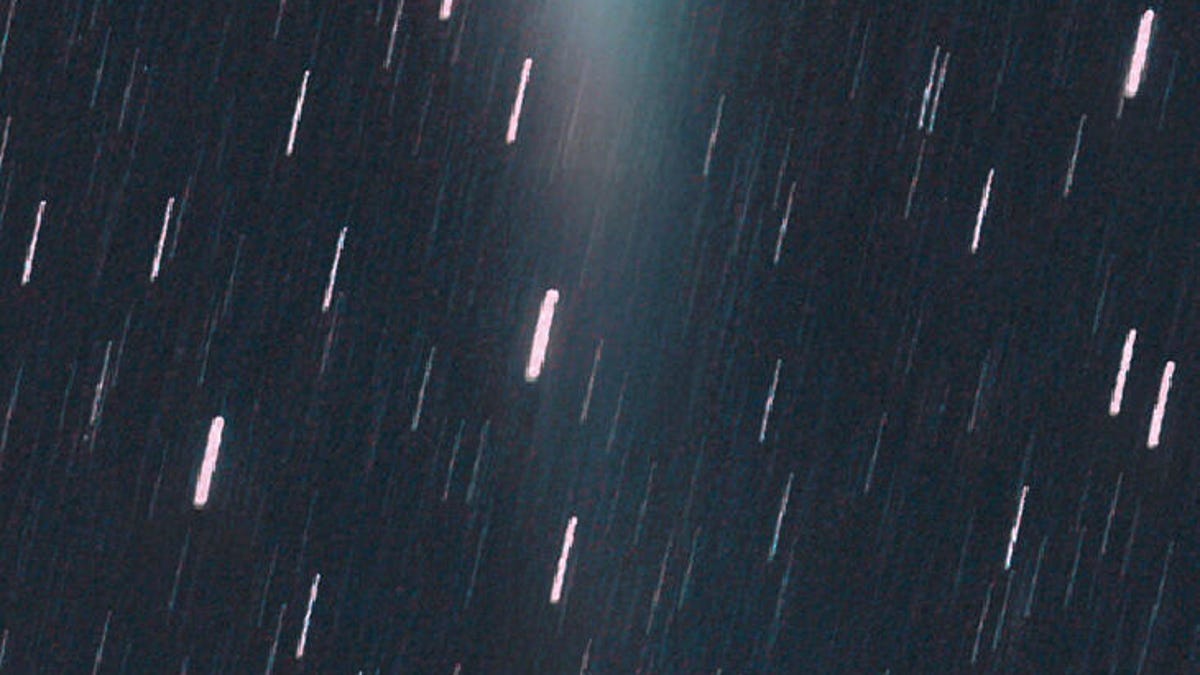Comet Atlas has become a bizarre comet within a comet
The short time we've been watching this space snowball has been marked by turbulent and unusual events.

A mini-comet can be seen inside the tail of main Comet Atlas.
This year continues to be a weird one, even for comets.
A few months ago, newly discovered Comet Atlas (C/2019 Y4) started brightening rapidly and some thought it might put on a show for the ages. But then just as quickly, it seemed to fade as it broke apart in the face of the sun's intense heat and radiation.
Skywatchers have largely turned their attention to another newfound bright comet, Comet Swan, but Atlas is still lingering in its faded and fragmented form. Recent photos show Comet Atlas still cruising the inner solar system as an unusual comet within a comet.
Images taken with large backyard telescopes like the one above show a small, white mini-comet with its own distinct tail within the larger green coma of the main comet.
This GIF more clearly shows fragmented comet Atlas against the backdrop of the night sky.
"Comet Atlas is plunging toward the sun with a close approach on May 31st inside the orbit of Mercury," writes astronomer Tony Phillips on spaceweather.com. "Intense solar heating could cause the battered core to fragment further, activating new 'internal comets,' or the whole assembly could disintegrate into a haze of dust and gas."
If Comet Atlas (or at least part of it) does survive this turbulent trip around the sun and heads back out to deep space, it's expected to return for another visit... in about 6,000 years.

